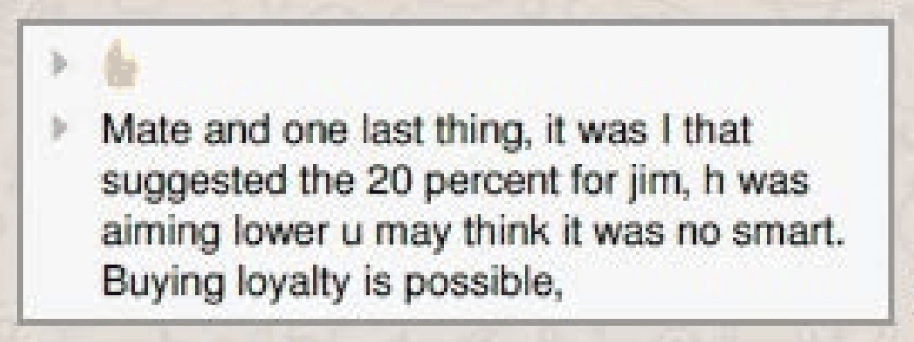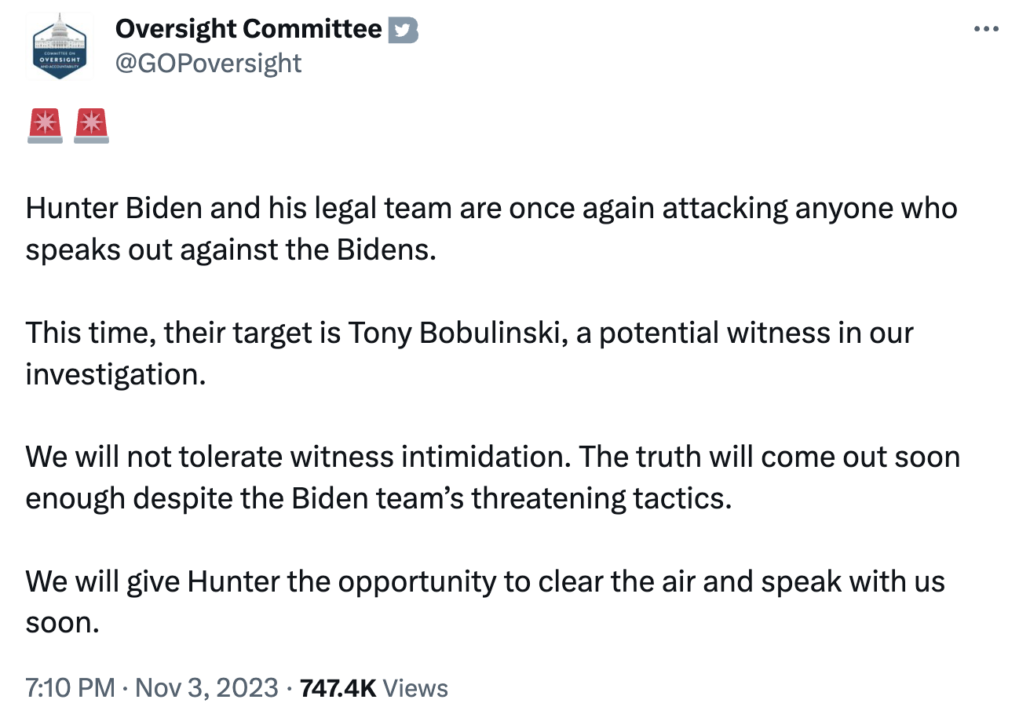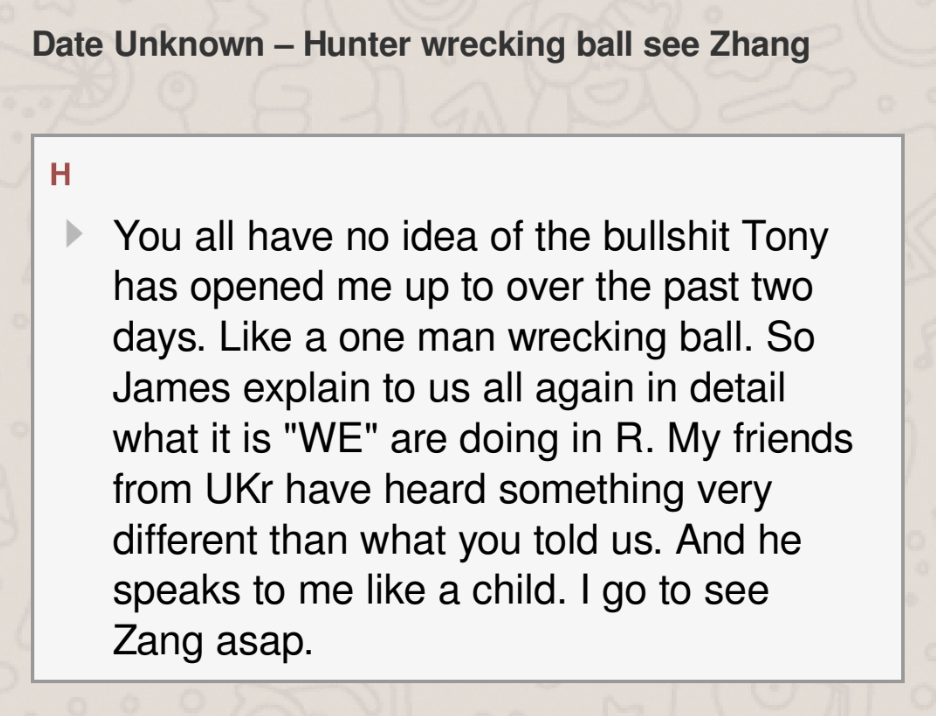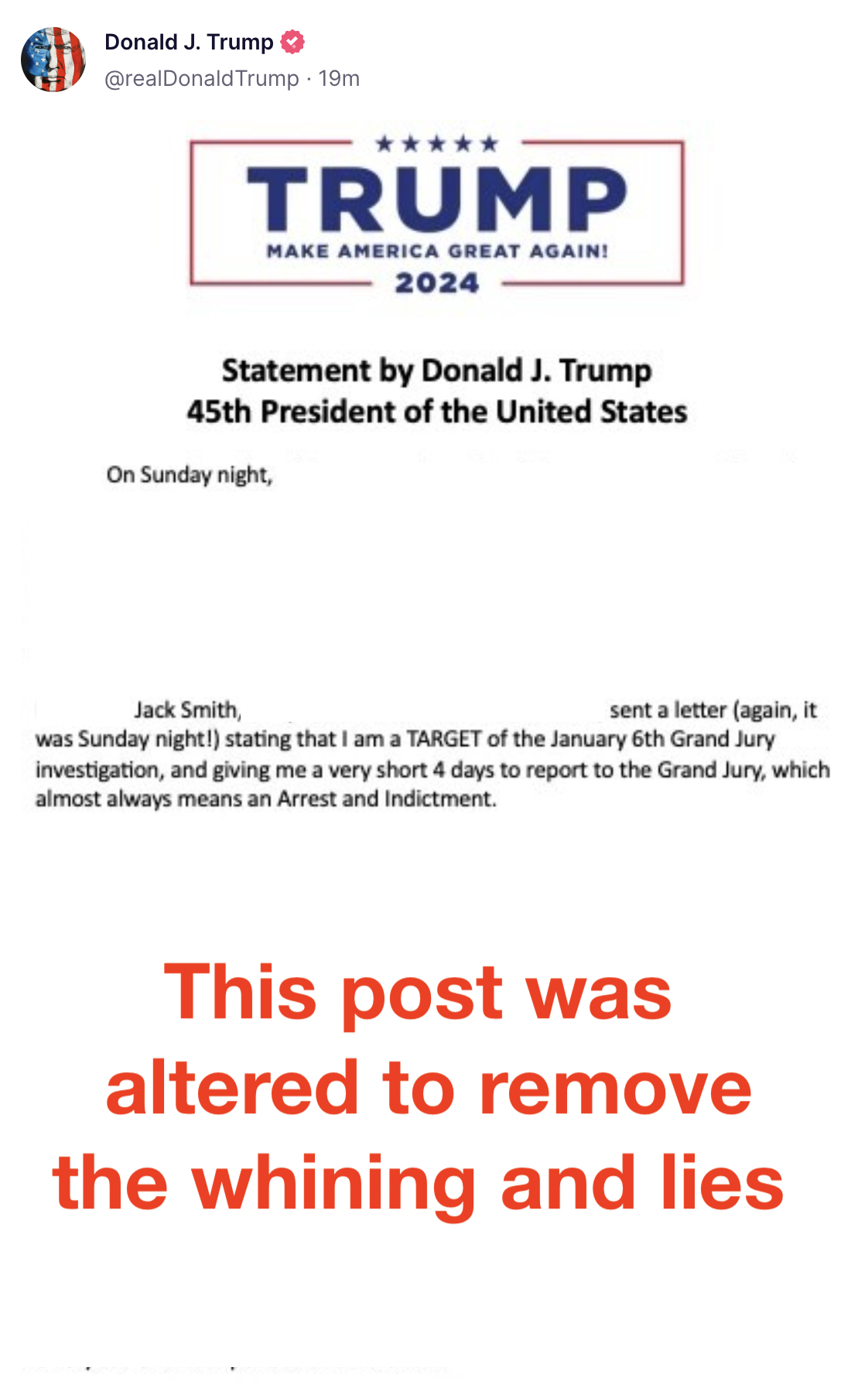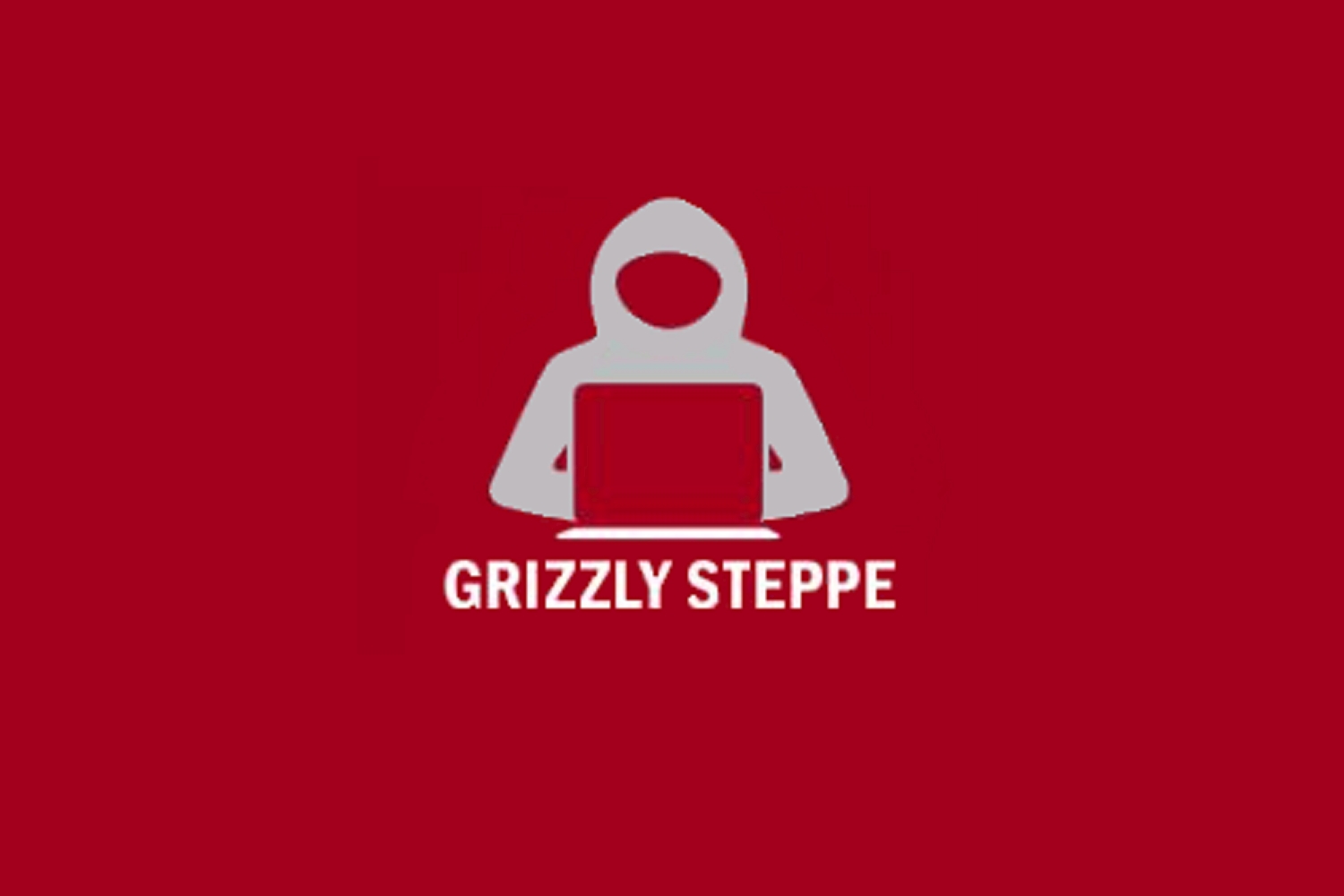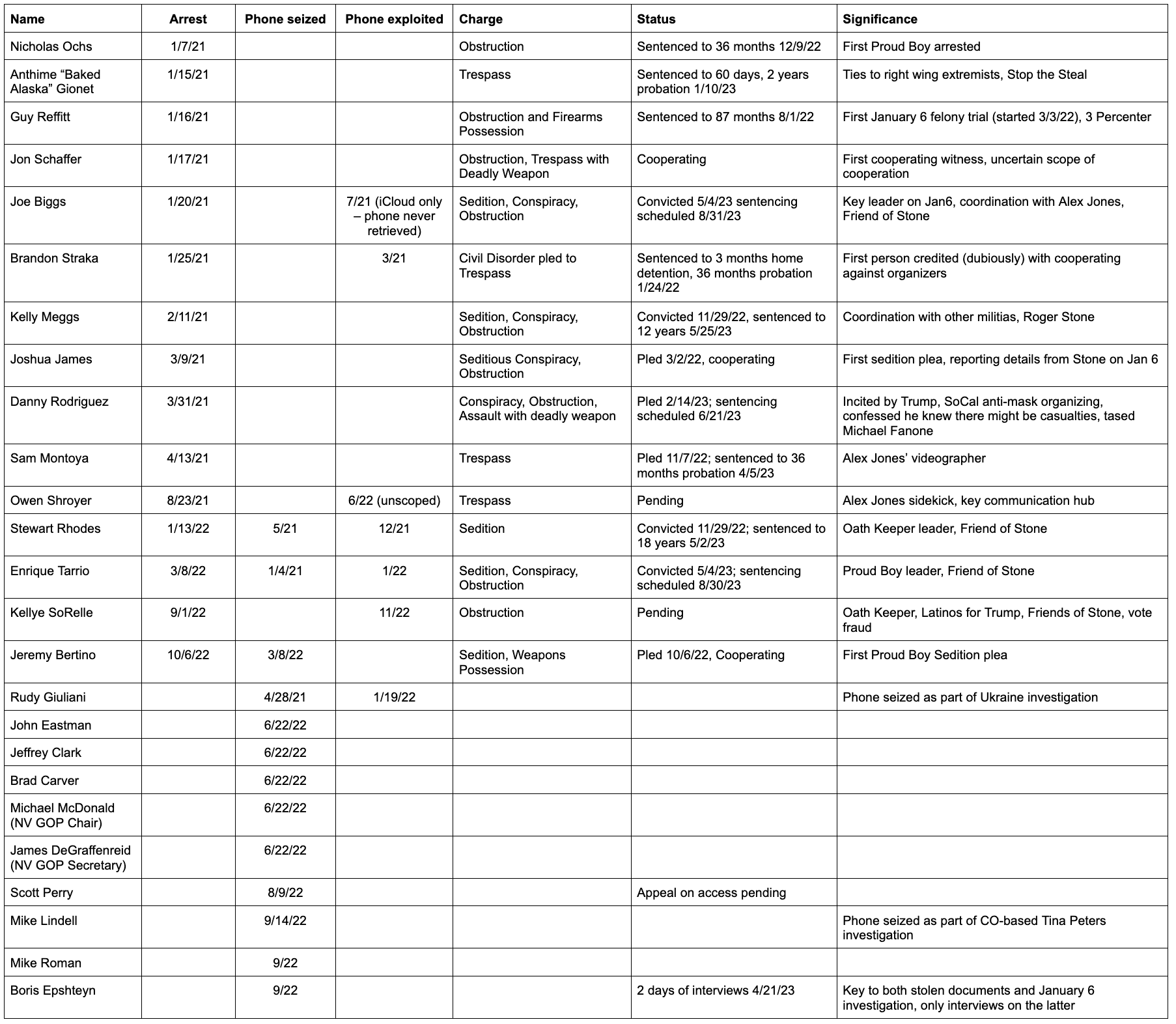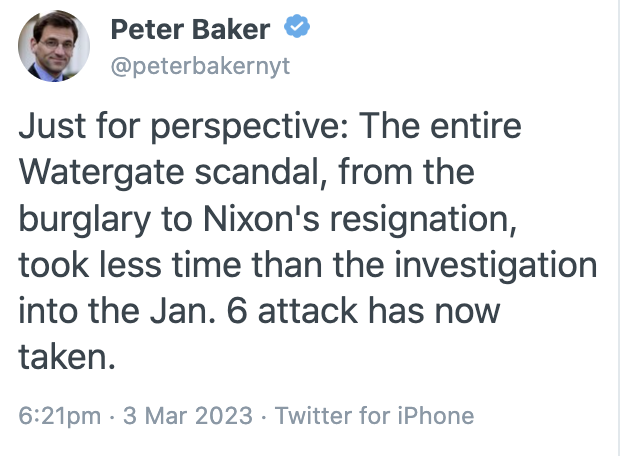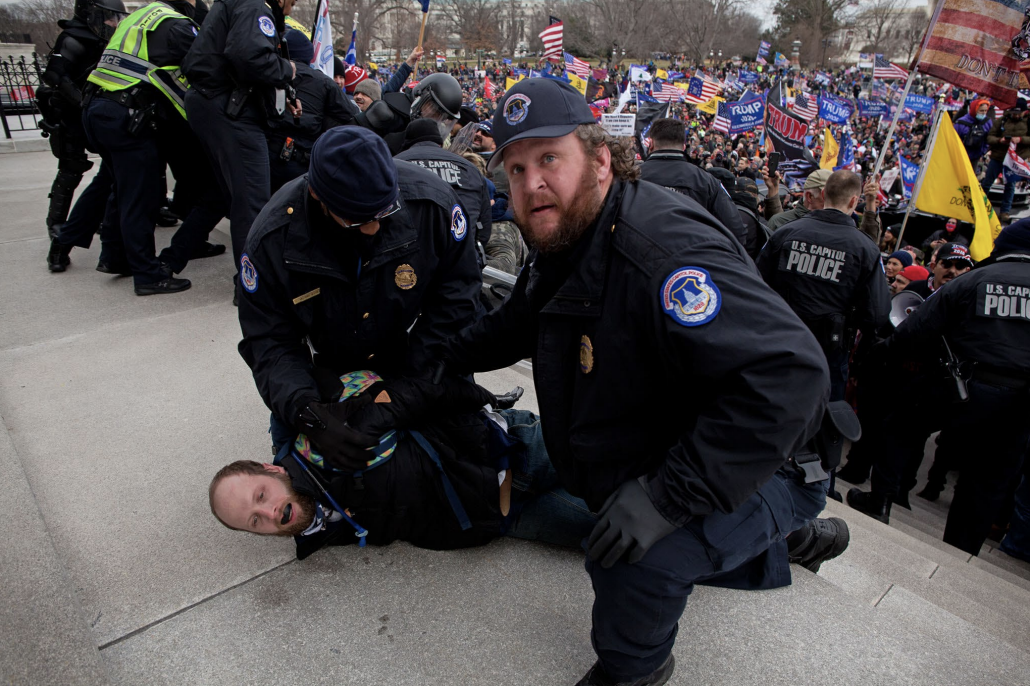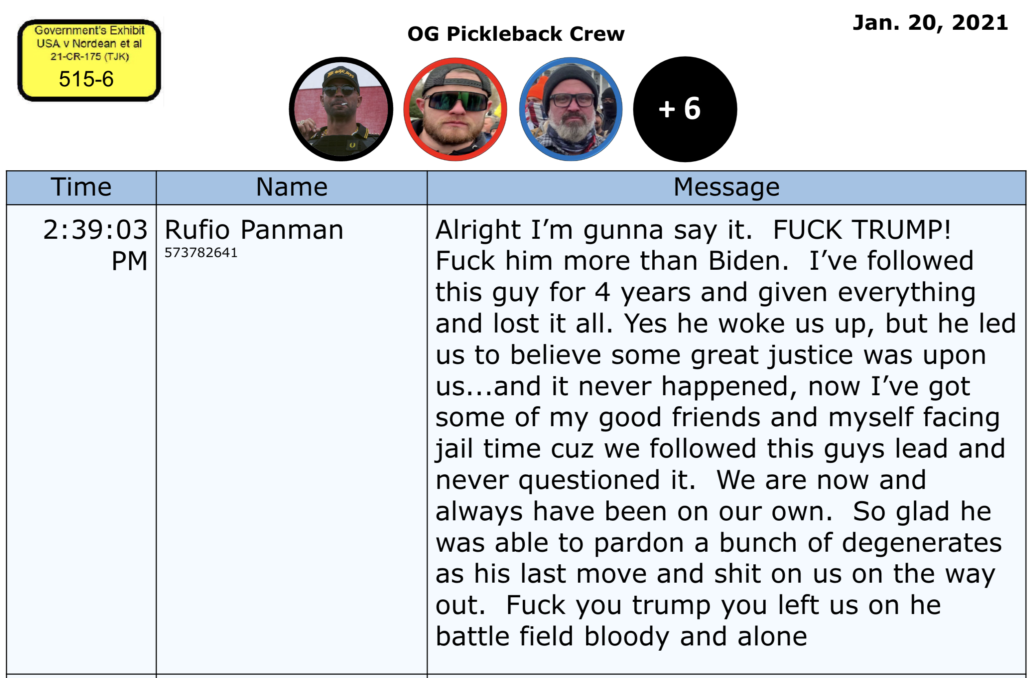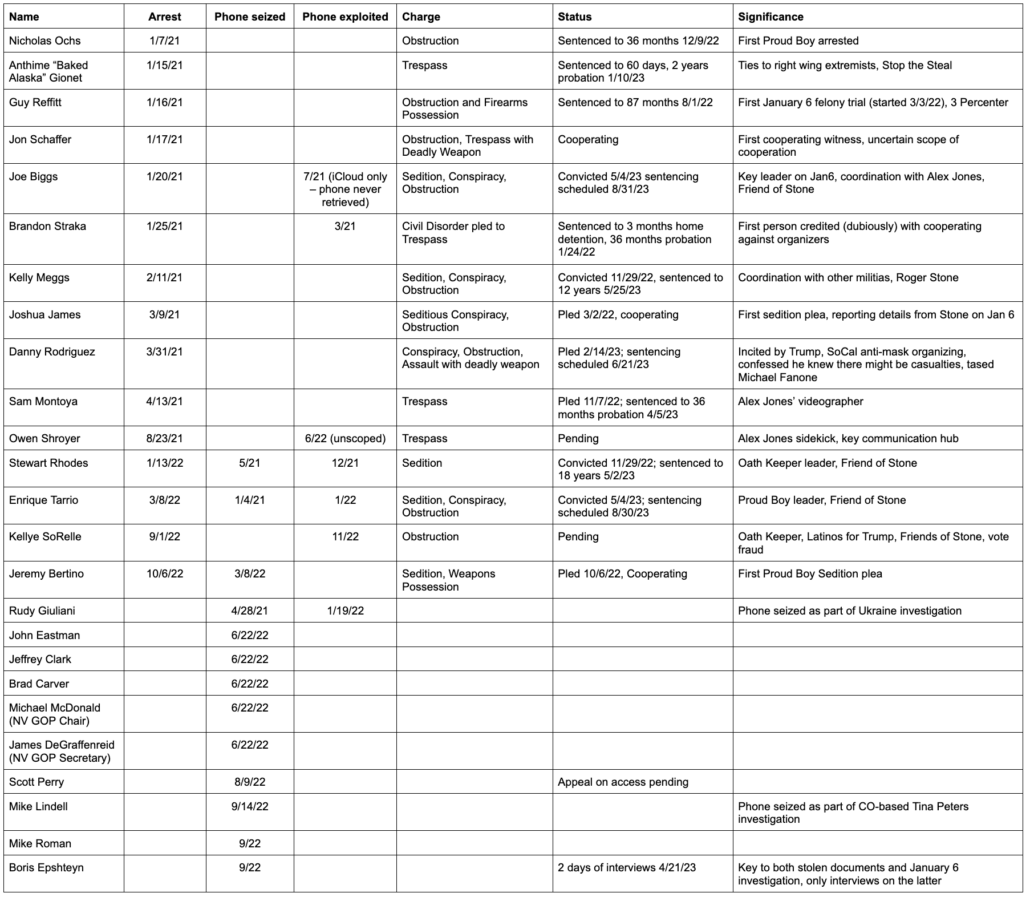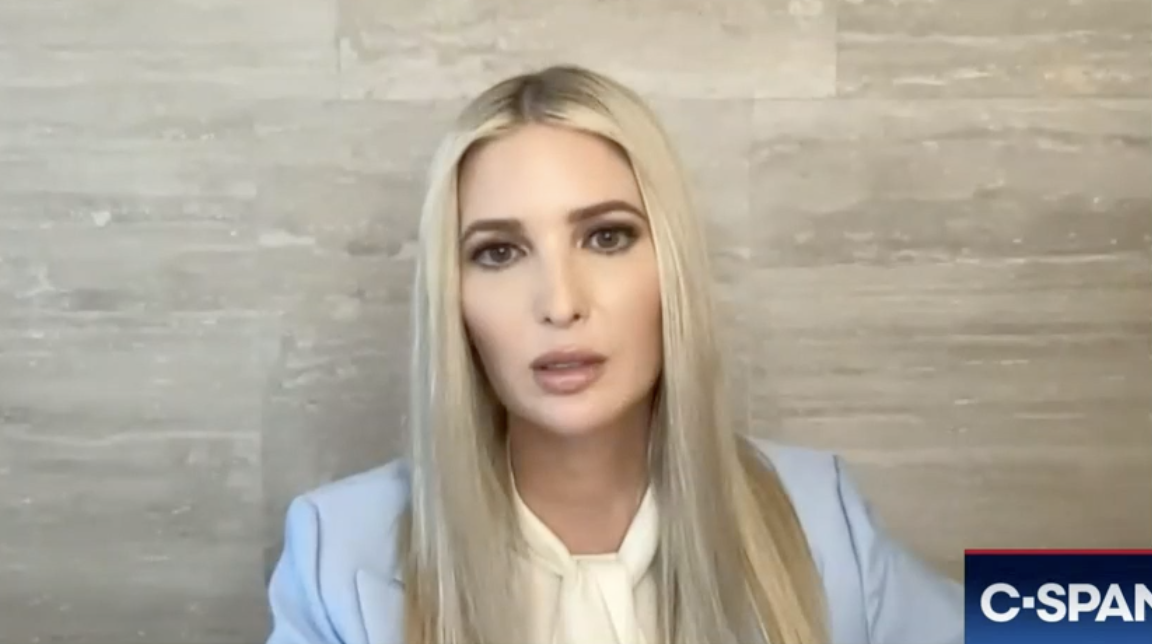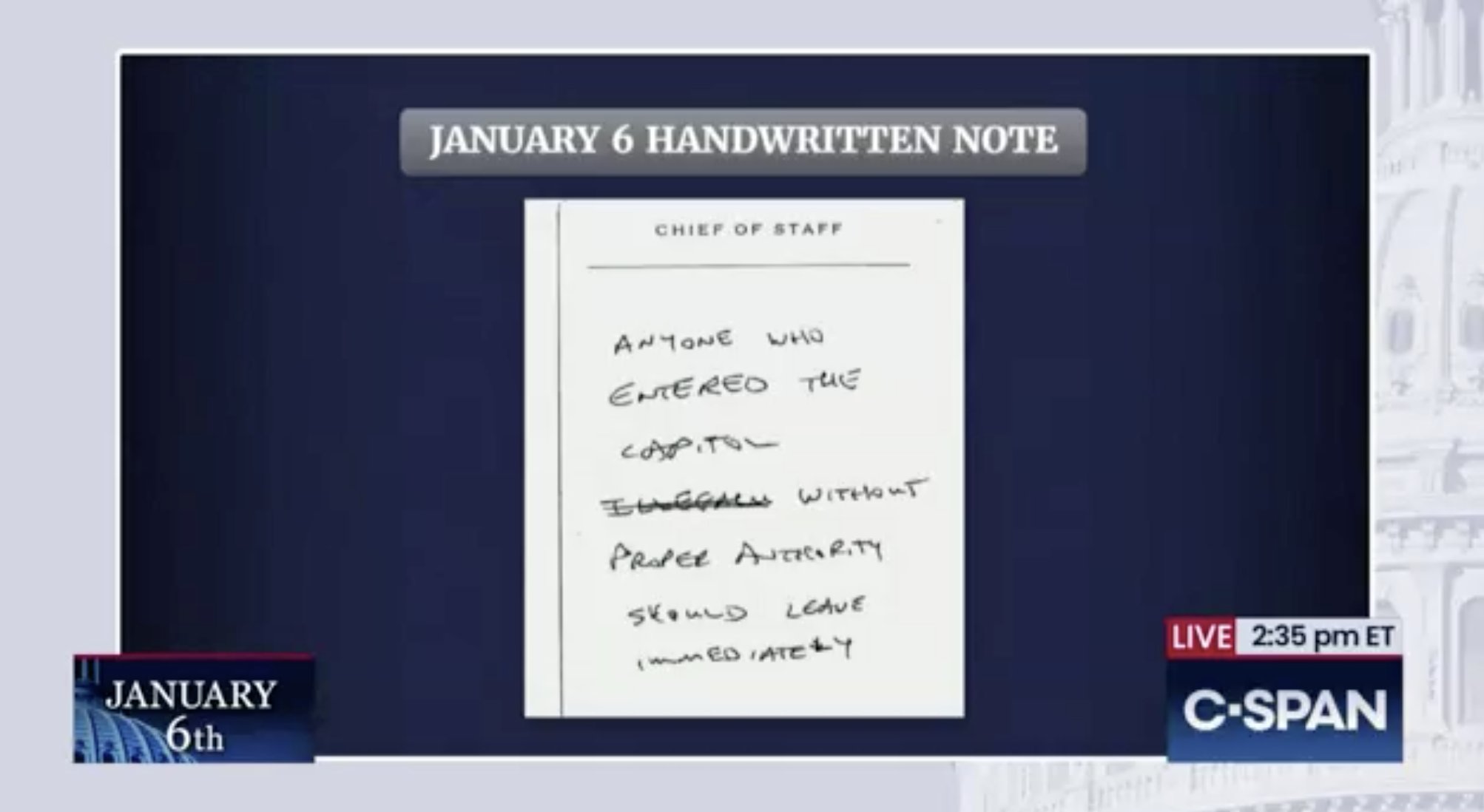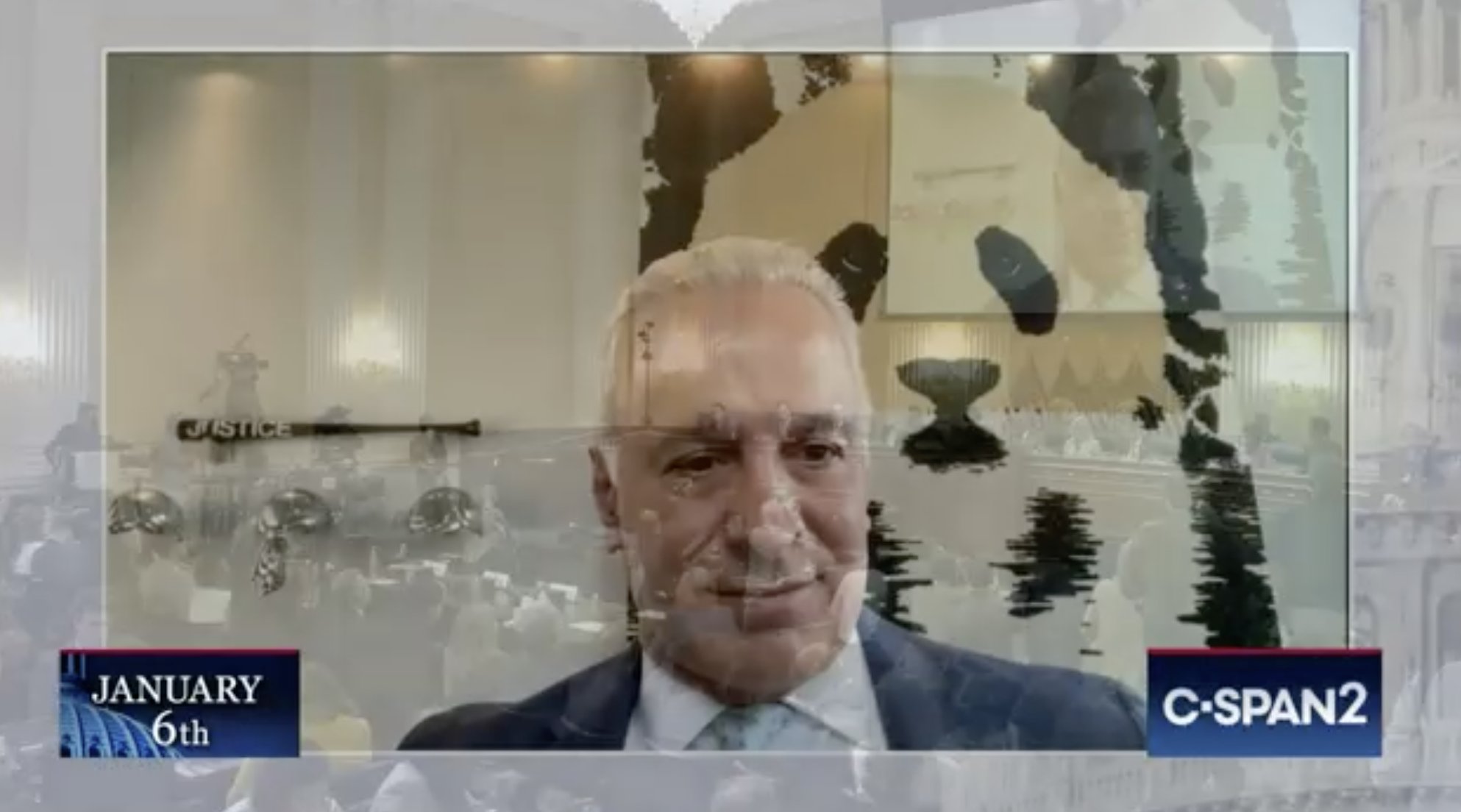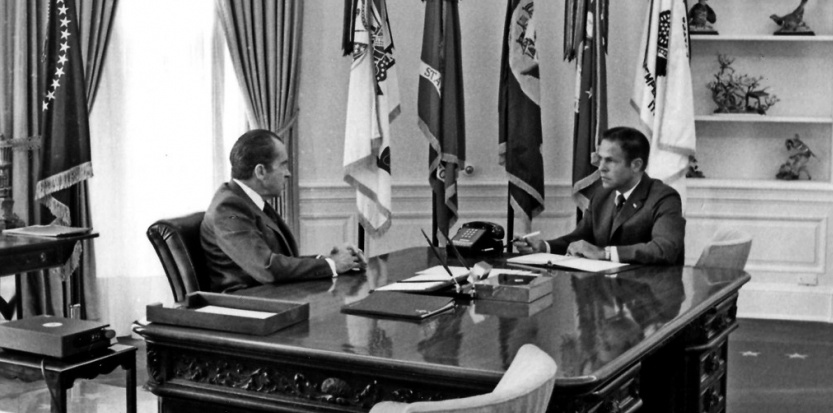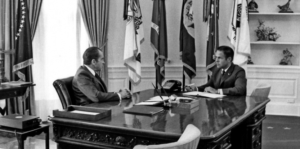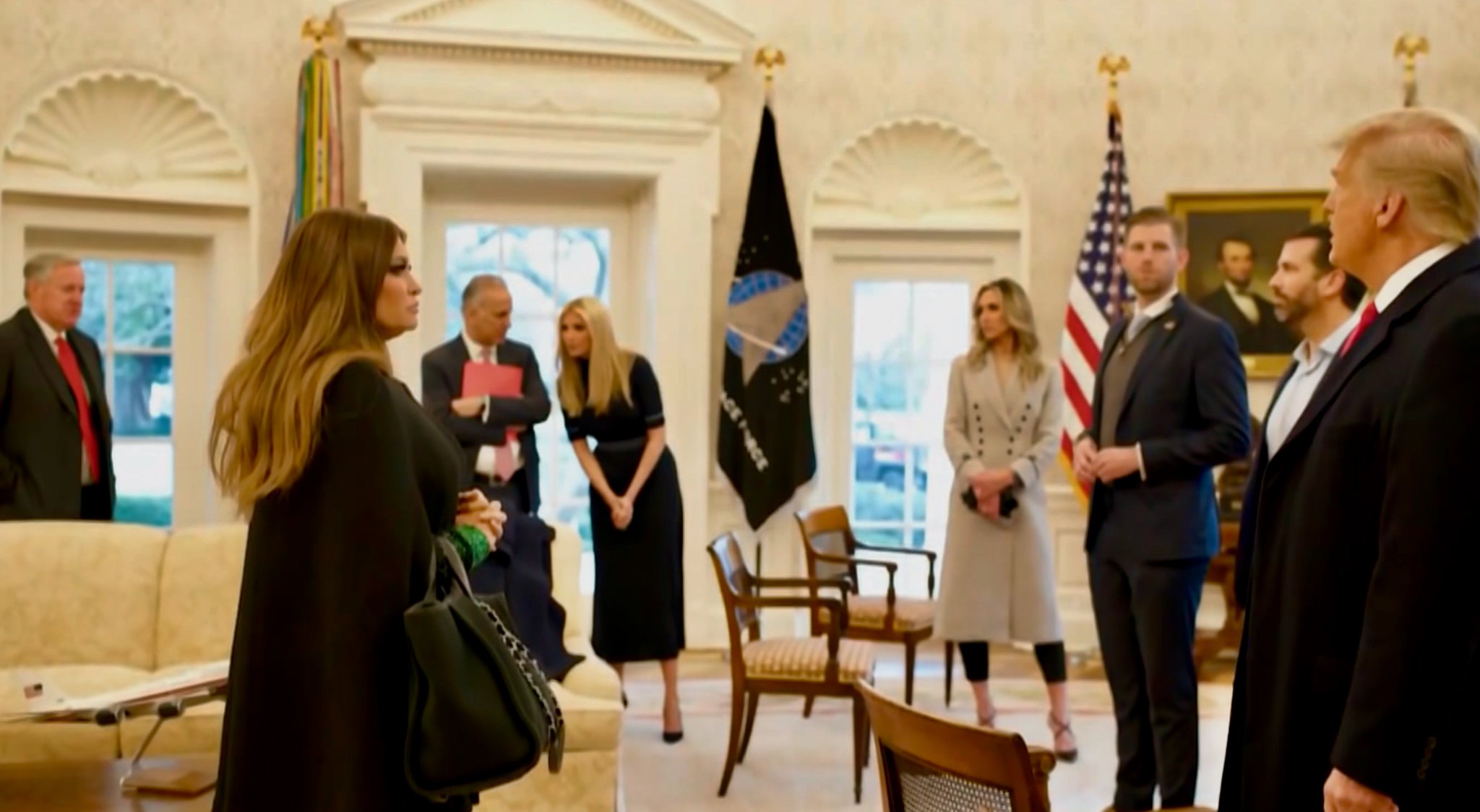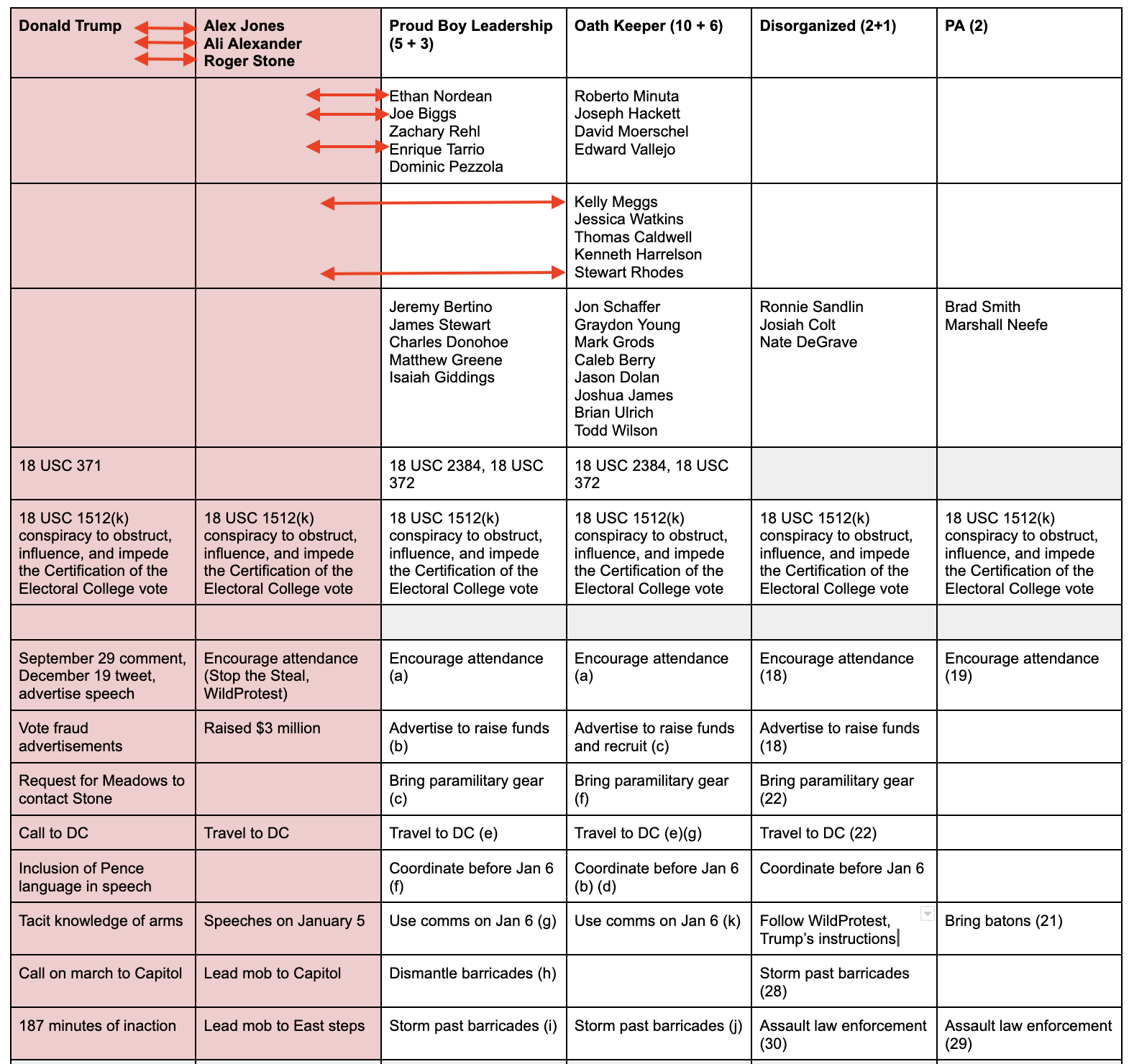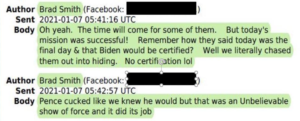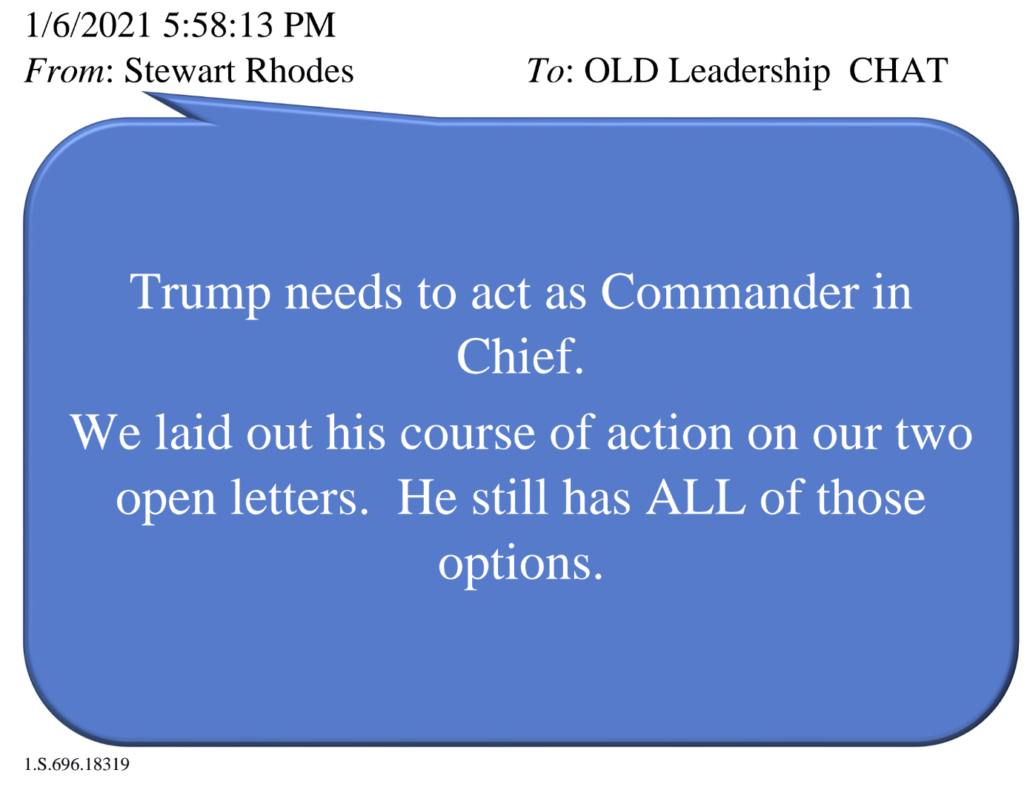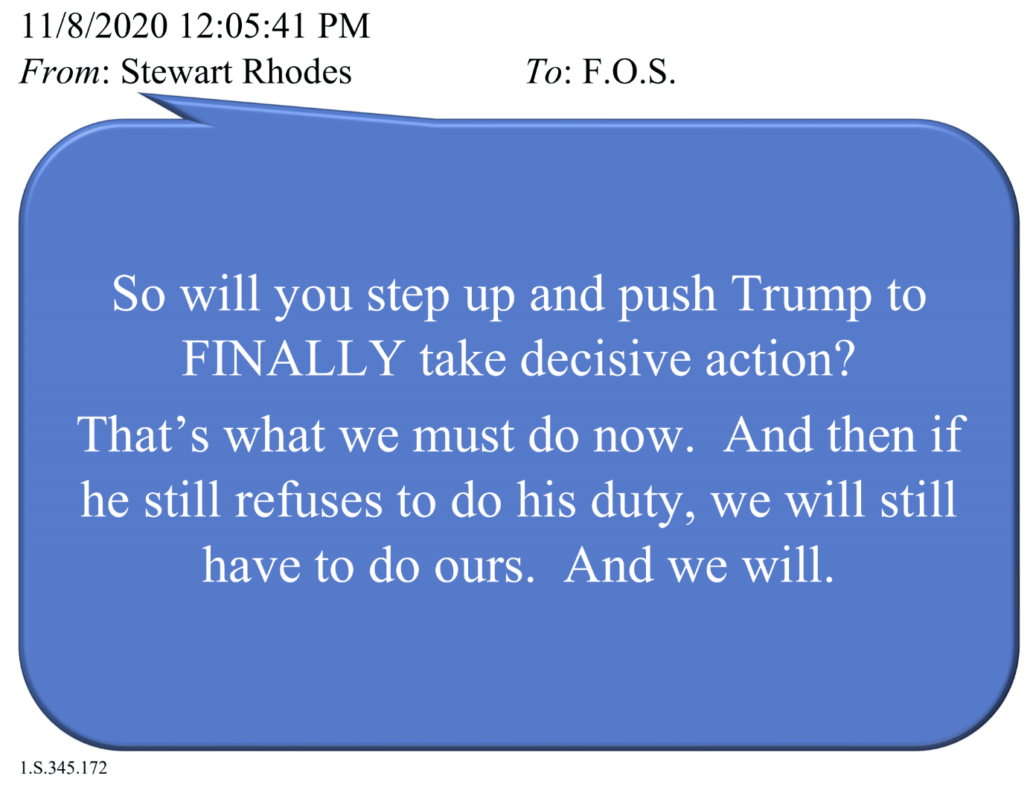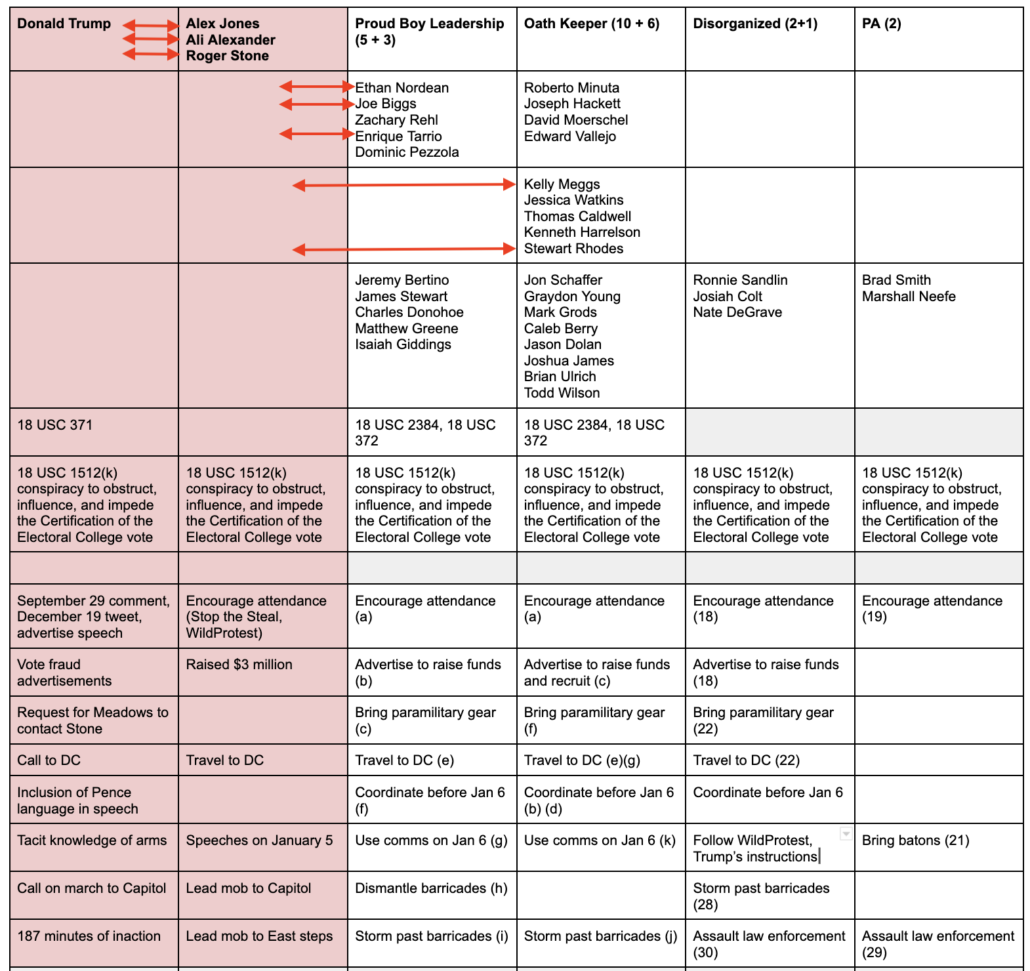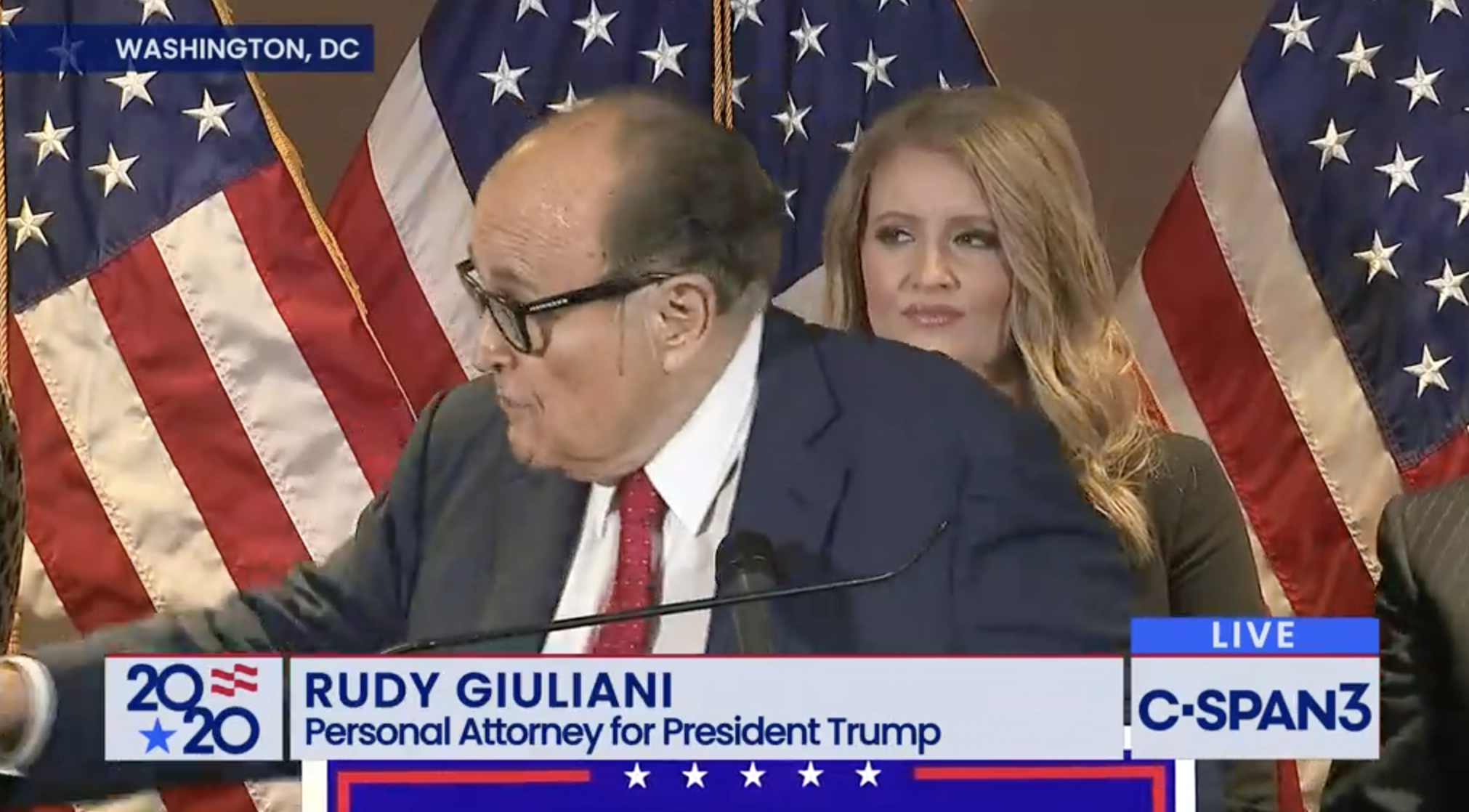James Comer Finally Finds Evidence Supporting Impeachment — of Donald Trump
Back on October 7 (after Hunter Biden sued Garrett Ziegler on September 13, after Hunter Biden sued the IRS on September 18, after Hunter Biden sued Rudy Giuliani on September 26, and after Matthew Graves testified to the House Judiciary Committee on October 3) — Abbe Lowell sent Graves a letter asking him to investigate whether Tony Bobulinski lied to the FBI on October 23, 2020.
The letter was first reported by NBC.
Jamie Comer has now seized on the letter in his latest demand for more information — and testimony of Hunter Biden. But this time, the evidence implicates Donald Trump, not Joe Biden.
The substance of Lowell’s allegation boils down to a claim that Bobulinski lied in his FBI interview when he claimed to have attended a key meeting with CEFC on February 19, 2017. If Bobulinski didn’t attend the meeting, he therefore lied in his interview when he made claims about personally witnessing the involvement of Joe Biden in all this.
The most significant set of false statements is central to Mr. Bobulinski’s entire interview and self-aggrandizement. The memorandum states that “BOBULINSKI first met in person with members of the BIDEN family at a 2017 meeting in Miami, Florida. BOBULINSKI, GILLIAR, WALKER, HUNTER BIDEN, and YE all attended the meeting.”11 This is deliberately false; Mr. Bobulinski did not attend a meeting with Mr. Biden and his associates in Miami in 2017, nor did he meet members of the Biden family then. Around February 13, 2017, Messrs. Biden, Walker, and Gilliar traveled to Miami to meet with CEFC Chairman Ye, Director Zhang, and other CEFC members to discuss a possible business venture. It is here that Mr. Biden met Chairman Ye for the first time, and at that meeting, a tentative business agreement was reached in principle to set up a joint venture with CEFC, and a business structure was discussed.
Despite what Mr. Bobulinski told investigators to pretend he had firsthand knowledge, he was never in and did not attend this meeting in Miami on February 14, 2017. [bold emphasis Lowell’s]
That’s not the only allegation in the letter; Lowell accuses Bobulinski of a bunch of other lies.
The most important — aside from his provable presence (or not) at that February 2017 meeting — has to do with the origin of the “10 held by H for big guy” letter that Fox News has made a focus of their propaganda for three years.
Lowell provided background to a series of communications in May 2017, during a period when the proposed Joint Venture involving Hunter, Bobulinski, James Gilliar, and Rob Walker, was losing ground in the competition for CEFC’s support in the face of a group involving James Woolsey. That’s what led Gilliar — not Hunter — to propose getting Joe Biden involved.
It is in this context that, on May 11, 2017, Mr. Bobulinski and Mr. Gilliar discussed their concerns that Chairman Ye had skipped meetings with Mr. Biden in New York, while separately attending a party held by Mr. Witkoff. (Ex. G attached hereto.) Mr. Gilliar acknowledges this growing concern about competition for CEFC in a May 11 message to Mr. Bobulinski: “Man U are right let’s get the company set up, then tell H and family the high stakes and get Joe involved.” (Id.) Importantly, this notion of “get[ting] Joe involved” was referenced as an idea by Mr. Gilliar to Mr. Bobulinski in private, and never sent to Mr. Biden, as potential leverage to counter the competition for CEFC’s U.S. investment.
This is consistent with what Gilliar told the WSJ in October 2020, in the wake of Bobulinski going public with these claims (as Lowell notes in his letter). But as Lowell also noted, Bobulinski’s claims that a split involving Joe Biden was real and happened earlier rests on his claim — which Lowell asserts to be false — to have been at the CEFC meeting in Miami.
Mr. Bobulinski took this lie even further when he willfully told investigators that the reference, “10 held by H for the big guy,” originated from deal discussions that he witnessed as between Mr. Biden and Chairman Ye in Miami in February 2017. As explained above, Mr. Bobulinski was never at that meeting in Miami and this fantasy was his and Mr. Gilliar’s.
Lowell pointed to additional texts seemingly supporting the claim that the idea of involving Joe only ever came from Gillier and Bobublinski. Weeks earlier, Hunter laid out a 50-50 split with CEFC, in turn split four ways (not including his uncle), and days after, Bobulinski bitched that bringing Jim Biden in — as a fifth recipient — would only serve to up the proportions of the Biden family. Gilliar responded that bringing Jim Biden in as a 20% stakeholder was his own idea, to buy loyalty, not Hunter’s.
As laid out, this means that Bobulinski or Gilliar, not Hunter Biden, may have been contemplating monetizing access to Joe Biden with the Chinese in 2017.
This allegation will get litigated in days ahead, I’m sure. As noted, Comer pointed to this letter about Bobulinski to justify doing what they were already planning on demanding: calling Hunter to testify.
For now, I’m interested in some logistical aspects of the allegation.
First, while Bobulinski’s claims have long been out there, Lowell only has a hook to package it up in a letter to Matthew Graves because the IRS agent who spent five years investigating his client, Joseph Ziegler, released the Bobulinski and Rob Walker interview materials on September 27 in support of his insinuation that the Delaware US Attorney’s office dropped the ball by not doing follow-up interviews with Bobulinski.
While providing this information in front of agents with the FBI, Bobulinski makes multiple references to Former Vice President Joseph Biden’s potential involvement with Sinohawk and the CEFC joint venture. 5.
In investigative team meetings that occurred after this, I can recall that agents on the investigative team brought up on multiple occasions to the assigned prosecutors that they wanted to do an interview of Bobulinski with the assigned case agents. I can recall being told that they would think about it and then ultimately being told there was no need for the team to interview Bobulinski and that Bobulinski was not viewed as a credible witness.
Note that the Bobulinski 302, unlike the Rob Walker or the Gal Luft 302s, is not the official 302.
The others, along with the IRS memorialization of James Biden’s interview, all appear in the official form and the FBI 302s have the “Official Record” stamp in the right hand corner.
The Bobulinski interview report Ziegler released, however, has not been entered in the official 302 form and by title is just a revision of his interview, with the author marked as one of the agents in the original interview; it appears to have been saved from Microsoft Word.
Ziegler doesn’t even call this a 302 and his description of how it came into his possession is tortured (though it’s similar to his description of how he got the Luft 302, which was saved from Notes).
This was a memo and attachment that was provided to the RHB investigative team by agents with the FBI regarding information that was provided to agents with the FBI Washington Field Office from Anthony Bobulinski.
That is, the form of the interview report raises real questions about whether Ziegler was ever supposed to have access to it or even whether the report was ever officially filed (a question Chuck Grassley also has raised). Though in Tim Thibault’s interview, he referred to the interview report as a 302 and described asking those involved, “how are you sending this information to Baltimore,” and being, “advised it was like an [sic] e-Guardian system. So there’s receipts for that.”
It took just ten days — September 27 to October 7 — after reading that interview report for Abbe Lowell to write a letter about the problems with it. That would suggest writing this letter, calling out the problems with Bobulinski’s testimony, was not a close call.
The possibility that the story Bobulinski told the FBI was subsequently discredited would explain a lot. Gary Shapley-adjacent reporting from last summer complained that Bobulinski had not been asked to testify before a grand jury. Long after Democratic Ranking Members Jamie Raskin, Jerry Nadler, and Richard Neal would have gotten a copy of the Lowell letter, Chuck Grassley demanded details about how Bobulinski’s interview was treated. And Joseph Ziegler, who seems to have little appreciation for how badly his conspiracy theories have damaged the case he tried to bring against Hunter Biden, revealed that, “ultimately,” prosecutors described, “Bobulinski was not viewed as a credible witness.”
If Lowell’s letter is right, there’s a good reason why Bobulinski was not viewed as credible: Because prosecutors would have quickly identified holes in Bobulinski’s story, making his tie to the White House — made explicit in his FBI interview when he described getting a COVID test at the White House the previous day even if they didn’t see reports that he had been Trump’s guest at the debate the day before — absolutely toxic.
And after (per Ziegler’s claims) prosecutors decided they didn’t want Bobulinski anywhere near their prosecution and definitely didn’t want him in front of the grand jury, Ziegler decided to share the details of Bobulinski’s interview with the FBI for all the world to see, a world that includes Hunter Biden’s lawyers, who now know that prosecutors were repeatedly asked about Bobulinski but, presumably for reasons that had to do with preserving plausible deniability about Bobulinski’s actions, didn’t do anything that would have required providing details about Bobulinski in discovery.
The reason you don’t put someone whose location data and other comms show he wasn’t where he claimed to be in front of an investigative team, much less the grand jury, is to preserve a fragile claim that the entire investigation wasn’t a political witch hunt directed from the President, to hide from defense attorneys that the President of the United States had ties with someone who would pitch (per Lowell) false claims to the FBI. But Joseph Ziegler, goaded on by a trio of dumbass Republican Committee Chairman, decided to make that available to Hunter’s legal team anyway.
Lowell’s letter doesn’t describe where he obtained the exhibits attached, but they include texts involving Hunter Biden (and so presumably in his possession), texts not involving Hunter Biden, and a scan of a stapled printed email involving Bobulinski. Even for the texts involving Hunter Biden, Lowell appears to lack reliable metadata.
And these are definitely cherry picked communications, enough so to counsel caution about this being the full story. Then again, Bobulinski tried to cherry-pick the communications he provided to the FBI himself, offering up three devices but asking to delete most of the content first. I would imagine that after Rob Walker told the FBI of Bobulinski’s rumored tie to Viktor Vekselberg just 16 days later, they would have taken steps to obtain a set of his communications that he hadn’t cherry picked.
The point being, whatever Abbe Lowell has, we can assume the FBI has a far better set of data, including location and travel data to track where Bobulinski really was at what time on February 19, 2017. The FBI doesn’t need Abbe Lowell to tell them that Bobulinski lied in this interview, if in fact he did; this letter to Graves (as opposed to sharing copies of it with the three Ranking Democratic members of committees involved in the impeachment charade) serves only to advertise that the FBI could have, but has not yet, responded differently to Bobulinski’s involvement.
It serves to flip the script that Republicans have been inventing.
I mean, let’s be clear what Abbe Lowell alleges, with some backup: He’s accusing Tony Bobulinski of doing the same thing for which Trump’s hand-picked Special Counsel John Durham prosecuted Michael Sussmann. But unlike that case, in which multiple witnesses testified that the Hillary campaign would never have wanted to share information with the FBI, in this case, Bobulinski showed up at the White House the day before and waltzed into the FBI with a former Trump White House Counsel.
And, frankly, Lowell pulls his punches on this — a bunch of them.
He briefly mentions and footnotes the passages from Cassidy Hutchinson’s book that describe contacts with Bobulinski, both the night before and some weeks after his FBI interview on October 23. Lowell doesn’t mention Hutchinson claims that, in advance of the second meeting — the one where Bobulinski showed up in a ski mask, someone told her that “the boss” asked Mark Meadows to meet with Bobulinski.
When staff began to deplane, we climbed back down and made our way to the offstage announcement area. A senior campaign official jabbed his finger into my shoulder. Alarmed, I spun around. “Chief’s still on the plane talking to the boss,” he said. “He’s going to meet up with Tony Bobulinski. Can you go get him?”
I took a step back and crossed my arms. “What do you mean?” I asked. He said gruffly, “The boss asked him to meet up with Tony Bobulinski. He’s here. It has to be low-key, though, so just find somewhere away from any cameras.” I looked at Tony Ornato, expecting him to say something. Instead, he pointed at Mark leaving Air Force One. “He’s coming,” he said. The aide walked away.
I didn’t know much about Tony Bobulinski, just that he was a former business associate of Hunter Biden’s and had something to do with the laptop controversy. Trump had brought him as a guest to the presidential debate in Nashville on October 22. I wasn’t tracking the story closely enough to know more. But as Mark approached, I had a weird feeling that we were in danger. I couldn’t explain it, but the feeling was real. “Mark shouldn’t do this,” I said to Tony. “He’s being set up.” Tony shrugged. “Don’t overthink things. It’s not a big deal. Chief knows what he’s doing. Bobulinski came with us to Nashville, remember? Don’t worry, kid.” He patted my shoulder and walked away as Mark approached me.
“You’re not meeting Tony Bobulinski here, Mark. We can send someone from the campaign.” I heard my voice whine with childlike desperation. “Please, Mark. This isn’t a good idea. Just trust me.” Mark looked at his Secret Service agent, then back at me. “Just go find him, and work with Secret Service to find a hidden spot. Come get me once you have him there.”
[snip]
As Brian thanked him, I recognized a few of the men sitting in idling Secret Service vehicles and rushed over to them. I asked if they could park four of the vehicles in the shape of a square, and explained that the chief needed to have a quick meeting with someone out of sight. They were reluctant at first and questioned why Mark couldn’t just meet the person where staff were congregated. “The chief of staff needs to have a private meeting,” I said, lying with convincing confidence. “If you want me to ask Tony Ornato to explain more, I’m happy to call him over.” They began lining up the vehicles, and Brian and I made our way into the crowd, searching for the fenced-in house.
[snip]
“There,” Brian said, and pointed to the house. “I don’t want to talk to him,” I told him, as three men came out of the house. I tried to pick out Tony Bobulinski, but they were all wearing hats and ski masks. Brian introduced himself and explained that we would bring them to the chief. I spun around and started pushing through the crowd to make a path for the group a good distance behind me.
[snip]
“This is really stupid of you, Mark. I don’t know what’s going on, but it’s really stupid,” I said. He didn’t have time to respond as I ushered him into the makeshift area, away from cameras, as requested, but not from watchful Secret Service eyes.
In the shadows of the bleachers, I observed Mark and Tony Bobulinski’s interaction through a gap in the vehicles. When they said their goodbyes, I saw Mark hand Tony what appeared to be a folded sheet of paper or a small envelope. Mark walked toward me, staring at the ground. He was silent for several moments as we made our way back to the staff holding area. [my emphasis]
Lowell also notes that Hutchinson raised concerns about the lawyering of Stefan Passantino, who represented Bobulinski at the interview. But he doesn’t mention that by the time of Bobulinski’s October 23, 2020 interview, Passantino had pitched Bobulinski as a source to the WSJ — with the involvement of then-White House lawyer, Eric Herschmann, as well as Don Jr’s best buddy Arthur Schwartz.
The three had pinned their hopes for re-electing the president on a fourth guest, a straight-shooting Wall Street Journal White House reporter named Michael Bender. They delivered the goods to him there: a cache of emails detailing Hunter Biden’s business activities, and, on speaker phone, a former business partner of Hunter Biden’s named Tony Bobulinski. Mr. Bobulinski was willing to go on the record in The Journal with an explosive claim: that Joe Biden, the former vice president, had been aware of, and profited from, his son’s activities. The Trump team left believing that The Journal would blow the thing open and their excitement was conveyed to the president.
That’s the story that ended in a flop, partly because records very similar to the ones Lowell included with his letter didn’t back Bobulinski’s story, and partly because Gillier refuted it in an interview with the WSJ.
Abbe Lowell doesn’t mention that, per the NYT story on this pitch to WSJ, Donald Trump knew the story was coming.
Mr. Trump and his allies expected the Journal story to appear Monday, Oct. 19, according to Mr. Bannon. That would be late in the campaign, but not too late — and could shape that week’s news cycle heading into the crucial final debate last Thursday. An “important piece” in The Journal would be coming soon, Mr. Trump told aides on a conference call that day.
Which means that when Lowell refers in his letter to,
The materials reveal the extraordinary lengths Mr. Bobulinski and other individuals were willing to go to implicate Mr. Biden or members of his family in some false and meritless allegations of wrongdoing. [my emphasis]
He never explicitly says that multiple sources say those “other individuals” include Donald Trump, personally.
Plus, Lowell goes easy on Bobulinski’s motives. Hunter Biden’s lawyer only assumes that Bobulinski allegedly lied, “to boost his own sense of self- worth,” not for any of a long list of more nefarious reasons that might involve being handed an envelope by the President’s Chief of Staff.
He relegates the allegations about Chinese cultivation of James Woolsey for his access to Trump in the Gal Luft indictment to a footnote. And while he raises Bobulinski’s possible ties with a range of hostile countries — including his alleged ties to Viktor Vekselberg — he doesn’t pursue the implications any of that would have for claims of foreign influence operations targeting Hunter Biden.
And Lowell plays coy about the reasons why Bobulinski would keep insisting on speaking with agents “read in[to]” any investigation into Hunter Biden.
In what can only be described as a strange exchange at the start of his interview, Mr. Bobulinski asked the interviewing agents whether they were “read in” on the information he was about to tell them. The interviewing agent responded that that was not how the process works and advised they did not have any specific knowledge of the information. Mr. Bobulinski and his attorney, Stefan Passantino, reiterated their request that Mr. Bobulinski only speak with agents who were “read in” to his testimony. The FBI agent then reminded Mr. Bobulinski that his testimony was voluntary. The expectation by Mr. Bobulinski and his attorney that FBI agents taking his voluntary testimony would be “read in,” whatever that means, is particularly troubling given that Mr. Bobulinski had met with President Trump and his campaign team the day before in Nashville.
Remarkably (or maybe not, as I’ll return to), the FBI seems to have anticipated that Bobulinski may have been sent by Trump to fish for information. Thibault explained that the reason Bobulinski was sent to the DC office rather than Baltimore was to keep the investigation secret. “[T]he whole idea that he came to WFO is they were trying not to disclose that there was an investigation in Baltimore is my belief,” described, later attributing that decision to the supervisor who set up the interview.
Again, none of these details are exactly new. But the specific circumstances created by Jamie Comer and Joseph Ziegler provided an opportunity to point out that Comer has more evidence worthy of impeaching Donald Trump than he does Joe Biden.

